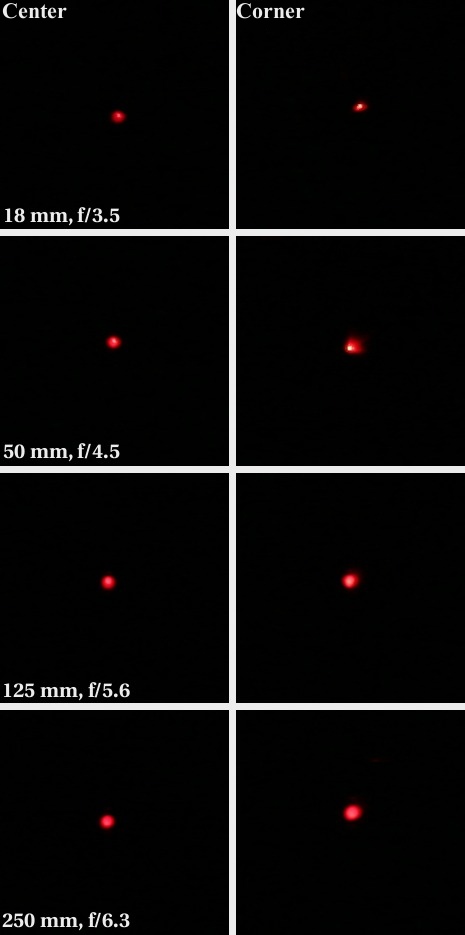Tamron AF 18-250 mm f/3.5-6.3 Di II LD Aspherical (IF)
7. Coma and astigmatism
Please Support UsIf you enjoy our reviews and articles, and you want us to continue our work please, support our website by donating through PayPal. The funds are going to be used for paying our editorial team, renting servers, and equipping our testing studio; only that way we will be able to continue providing you interesting content for free. |
- - - - - - - - - - - - - - - - - - - - - - - - - - - - - - - - - - - - - - - - - - - - - - - -
As for a zoom lens with its parameters, we might say that the coma correction can be considered acceptable. The coma influence on the image quality is the biggest near 50 mm focal length , but the deformations are not pronounced and usually disappear on stopping down by one stop.

With astigmatism the situation is a bit worse. A lens body where plastic elements prevail, a long telescopic barrel, which supports quite heavy and big front element – all these things create favourable conditions for this off-axis aberration. Everything should really move perfectly smoothly and on axis to eliminate astigmatism. The problem is that in this class, lenses have a tendency to deteriorate after a year or two of usage when it comes to the off-axis aberrations, even if at the beginning everything was in perfect order. If the astigmatism is visible in a new lens, as it is the case because it amounts to 12%, it doesn’t bode well for the future.






